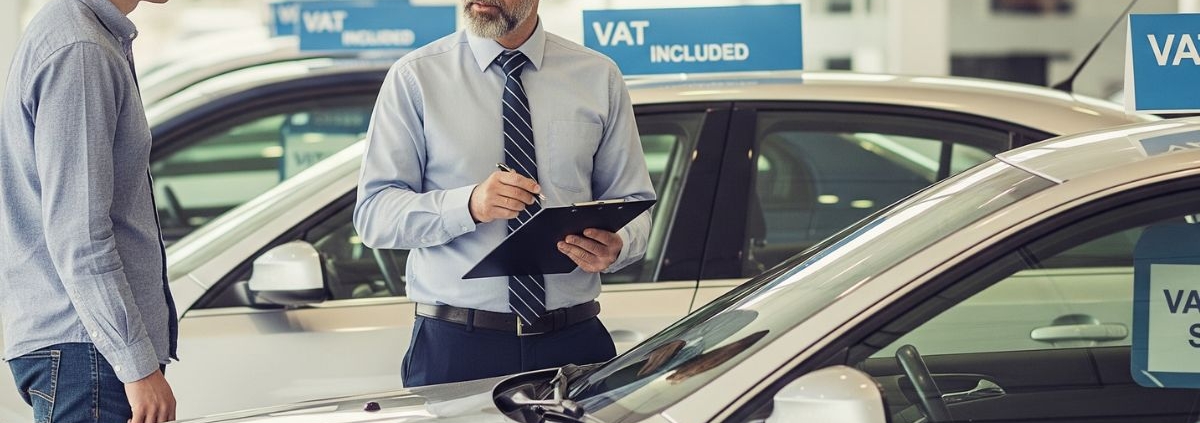Used Car VAT Explained: What Dealers and Private Sellers Need to Know
When buying or selling a used car in the UK, VAT is one of those hidden costs or exemptions that many people don’t fully understand. Whether you’re a private seller, an independent trader, or a used car dealership, knowing how VAT applies can make a big difference in pricing, compliance, and profitability.
This guide breaks down the essentials of used car VAT in clear, simple terms. You’ll learn how VAT works on second-hand vehicles, what schemes apply to dealers, and how private sellers can avoid unexpected issues. Let’s clear the confusion once and for all.
What Is VAT on Used Cars and Why It Matters
VAT (Value Added Tax) is usually included in the sale of new goods and services—but things work a bit differently with used cars.
Types of Used Car Sales and VAT Treatment
Understanding which category your transaction falls into is the first step:
- Private sales – No VAT applies.
- Trade sales (dealers or traders) – VAT may apply based on the scheme used.
- Business-to-business (B2B) vehicle sales – Often VAT registered.
If you’re dealing with cars as a business, VAT can affect how you advertise, price, and invoice vehicles.
Why It Matters
Knowing how VAT applies to used cars is important for:
- Pricing vehicles accurately
- Staying compliant with HMRC rules
- Understanding profit margins and reclaim options
- Building buyer trust through transparency
VAT Schemes for Used Car Dealers
Dealers can sell used vehicles using one of two VAT schemes. The right one depends on how the vehicle was acquired.
1. VAT Margin Scheme
This is the most common scheme for second-hand cars bought from private individuals or non-VAT-registered businesses.
How It Works:
- You pay VAT only on the profit margin, not the full sale price.
- The VAT is not itemised on the invoice.
- Ideal for vehicles acquired without reclaimable VAT.
Example:
Buy a car for £4,000, sell it for £5,000 → VAT is calculated only on the £1,000 margin.
Pros:
- Reduces VAT liability
- Simple invoicing
- Good for cars sourced from private sellers
2. VAT Qualifying Scheme
This applies when the car was purchased with VAT included and reclaimable (often ex-fleet or business-use vehicles).
How It Works:
- You charge VAT on the full selling price.
- The invoice must show VAT separately.
- Buyer (if VAT-registered) may reclaim VAT.
Example:
Buy for £6,000 + £1,200 VAT → sell for £8,000 + £1,600 VAT
Pros:
- VAT is transparent and reclaimable by VAT-registered buyers
- Often used in business-to-business transactions
Important Note:
Once a VAT qualifying car is sold privately, it typically loses its VAT-qualifying status.
Best Practices for Dealers and Sellers
Know Which Scheme Applies
Before listing any vehicle, confirm whether it’s margin scheme or VAT qualifying. This affects how you:
- Price the car
- Write the invoice
- Present VAT to buyers
Use Clear Labelling
Especially for online listings or forecourt displays, use terms like:
- “VAT included”
- “VAT margin vehicle”
- “Plus VAT” (for VAT qualifying cars)
Misleading adverts can lead to penalties or loss of buyer trust.
Keep Proper Records
HMRC expects detailed records for VAT-affected sales, especially for margin scheme vehicles. Keep track of:
- Purchase invoices
- Selling invoices
- Vehicle details
- Profit calculations
Digital tools or dealership management software can help simplify record-keeping.
Be Transparent With Buyers
Buyers—especially businesses—may ask:
- Is the car VAT qualifying?
- Can I reclaim the VAT?
- Is the price VAT-inclusive?
Always answer accurately and ensure your staff are trained on VAT basics.
Common Mistakes to Avoid
❌ Confusing VAT Margin and VAT Qualifying
Don’t label a VAT margin vehicle as “VAT reclaimable”—it’s not. That’s a common error that leads to disputes.
❌ Failing to Separate VAT on Invoices (When Required)
For VAT qualifying vehicles, you must clearly show:
- Net price
- VAT amount
- Total price
Failure to do so is non-compliant and risky.
❌ Forgetting That Private Sales Are VAT-Free
Private individuals don’t charge VAT when selling their own car. If you’re a buyer, this means no VAT reclaim.
Tools & Trends in Used Car VAT for 2025
Digital Accounting & VAT Apps
Many used car dealers now use tools like:
- QuickBooks with VAT plugins
- Xero auto-invoicing
- HMRC MTD (Making Tax Digital) integrations
These tools reduce errors and simplify VAT submissions.
Demand for VAT Qualifying Cars
There’s increasing interest in VAT qualifying vehicles from self-employed buyers, small businesses, and limited companies especially for electric or low-emission company cars.
Consider sourcing such vehicles if you serve a B2B customer base.
Conclusion
Whether you’re running a dealership or selling a car privately, understanding used car VAT is key to staying compliant and competitive. From choosing the right VAT scheme to avoiding common mistakes, the goal is clear: price vehicles fairly, keep proper records, and be transparent with buyers.
If you’re a dealer, review each vehicle’s VAT status before you advertise it. If you’re a private seller, remember you don’t need to worry about VAT. But being informed never hurts.
🔍 Looking for more tips on VAT and used cars? Check out our expert insights at Trade London Motor Sports and keep your car business running smoothly.



Leave a Reply
Want to join the discussion?Feel free to contribute!